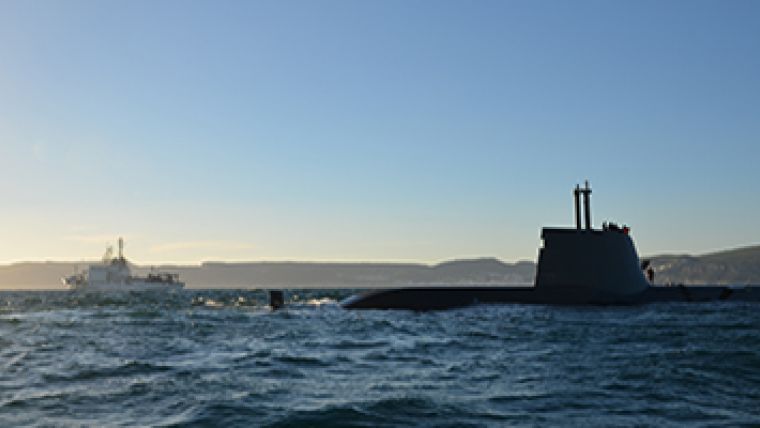International Collaboration Lab for Autonomous Solutions
Several different Unmanned Surface Vessels (USVs), Autonomous Underwater Vehicles (AUVs) and Unmanned Aerial Vehicles (UAVs), equipped with different sensors and acoustic payloads, are being used together in the seventh annual edition of REP16-Atlantic exercise, a joint exercise of the Portuguese Navy, the NATO Centre for Maritime Research and Experimentation (CMRE), and the University of Porto. From 5 to 31 July 2016, off the coast of Portugal, the Portuguese Navy, the NATO Centre for Maritime Research and Experimentation and the University of Porto operated together in the maritime exercise which also marks the first international at-sea campaign for NRV Alliance under the Italian Flag.
REP16-Atlantic stands for Recognized Environmental Picture (REP) Atlantic 2016 and it is being conducted south of Sesimbra and Setubal. It also involves participants from the Belgian Navy, Oceanscan (Portugal), as well as observers from Naval Undersea Warfare Center (USA), NASA (USA), and European Project H2020 JPI Oceans.
Expeditionary Hydrography
For the third time in a row, the nexus of autonomous solutions is at sea to demonstrate robotic capabilities in mine countermeasures, expeditionary hydrography, search and rescue, maritime law enforcement operational scenarios, and Rapid Environmental Assessment. This will also include the demonstration of a solution regarding the operational use of SeaCon Class AUVs in combination with the Portuguese ‘Tridente’ Class Submarines.
REP16-Atlantic aims to assess how significantly multi-domain cooperative robotics could improve current capabilities of Navies at sea. To this end, robots are being deployed from the Portuguese navy ships NRP Escorpião, NRP Pégaso, NRP Andrómeda, NRP D. Carlos I, submarine NRP Arpão, in addition to the NATO Research Vessel Alliance.
Test of Collaborative Autonomous Behaviour
CMRE scientists on board the NATO ship, in particular, are testing collaborative autonomous behaviours of underwater vehicles for anti-submarine warfare (ASW) applications, while also testing the performance of network-based solutions for vehicle localisation and navigation. For underwater acoustic communications, networking and equipment capabilities are being tested, including Wave Gliders used as autonomous gateways. The exercise includes an assessment of the capabilities of JANUS, an underwater digital communication protocol, developed at CMRE, which is in the process of becoming a NATO standard and is currently being promoted in the maritime industry.
Through REP16-Atlantic, all the partners will enable collaborative research to increase interoperability and underwater communications capabilities, automation and cooperation of unmanned underwater, surface and aerial vehicles.
REP16-Atlantic also marks the first international research campaign of the NATO Research Vessel Alliance after the new flag agreement with the Italian Navy. The REP16-Atlantic features and objectives were presented on 18 July in Lisbon (Portugal), in the presence of Rear Admiral Matthew A. Zirkle (US Navy), Deputy Chief of Staff Submarines – COMSUBNATO, Ana Paula Vitorino, Minister of the Sea of Portugal, Marcos Perestrello, Secretary of State for Defence, General Artur Neves Pina Monteiro, Chief of Defence of Portugal.














